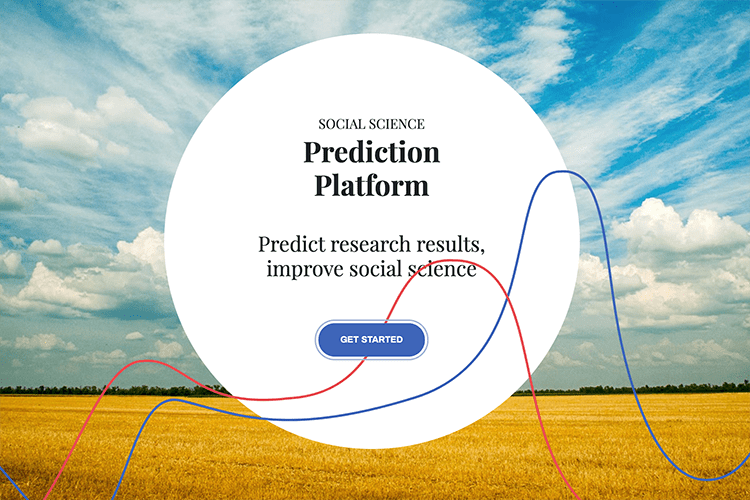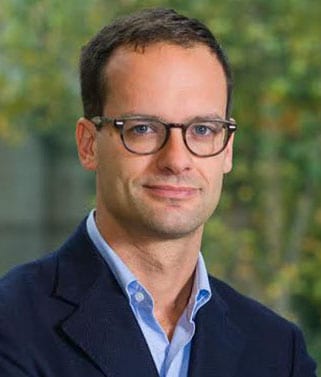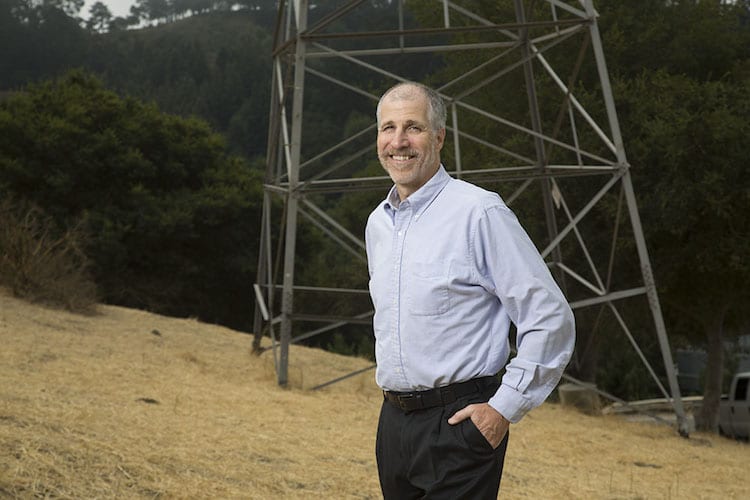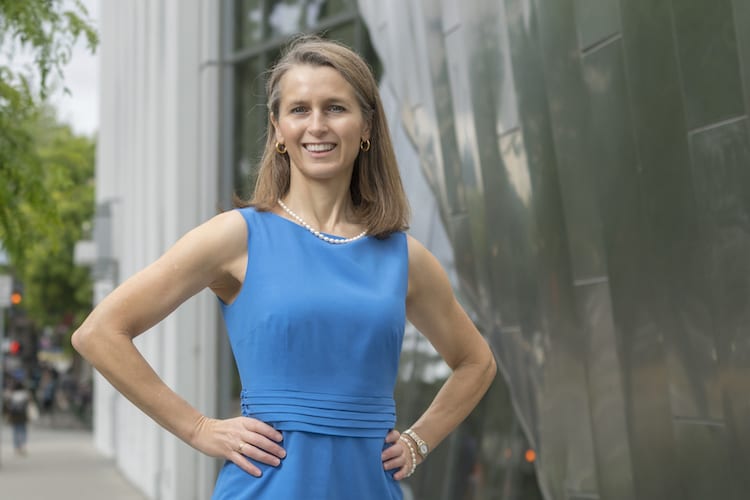
Cryptocurrencies are not investments for the faint of heart. As anyone who has followed the Bitcoin saga knows, the rollercoaster price movements of these digital assets are only for those with strong stomachs (or who want to conceal their transactions). In recent years, however, a new form of cryptocurrency has emerged with the promise of much less volatility. So-called stable coins, such as Tether, the stable coin market leader, are pegged one-to-one to the U.S. dollar or other asset, in theory making them safer.
Berkeley Haas News spoke to Rich Lyons, professor of finance and economics who served as Haas dean from 2008 to 2018 and is now UC Berkeley’s first chief innovation and entrepreneurship officer, about this new wrinkle in cryptocurrencies. Lyons, an expert in currency exchange rates who holds the William & Janet Cronk Chair in Innovative Leadership, recently co-authored a paper with Ganesh Viswanath-Natraj of England’s Warwick Business School examining what keeps stable coins stable.
Among their conclusions: Stable coins could open the door to the wider crypto world without the wild price swings of free-floating cryptocurrencies like Bitcoin. Even so, as Lyons stresses, stable coins are not necessarily the safe havens they are advertised to be.
If you look at a price chart of Bitcoin over the past few years, it looks like a trek through the Himalayas, with enormous peaks and valleys. Why are cryptocurrencies so much more volatile than traditional currencies?
We can answer that question by thinking about the dollar-euro exchange rate, which is more volatile than people originally thought it would be. The issue is that the euro’s fundamental value is a difficult thing to pin down, leaving a lot of room for speculation. Instability like that gets magnified in the world of cryptocurrency. At the end of the day, the Bitcoin-dollar exchange rate is just another exchange rate, and a lot of those same speculative dynamics are there.
But why are Bitcoin’s price movements so much greater than those of traditional currencies?
The big issue is that the fundamental value of Bitcoin is even more nebulous than that of the euro. We can at least start to think about the fundamentals of the dollar-euro exchange rate, like the growth rate in Europe versus the U.S. With a cryptocurrency like Bitcoin, the fundamental picture is much harder to pin down. You have the same speculative dynamics as in a regular currency market, but with much fuzzier fundamentals.

What exactly are cryptocurrencies?
Over the past five-to-ten years, what some people are calling the digital asset economy has emerged. The digital asset economy lies outside the traditional banking system and is generally housed on a blockchain, which is a secure, decentralized electronic ledger used to record transactions. The digital asset economy includes cryptocurrencies like Bitcoin and so-called initial coin offerings. These assets serve multiple purposes. For example, I could issue 100 tokens, and by buying one, you could own one one-hundredth of a work of art. We can break up lumpy assets and give people ownership of small slices. In addition, this digital asset economy gives people in countries that might not be able to hold assets because of capital controls or other restrictions access to more of the world’s assets.
What’s the purpose of stable coins?
Because this digital asset economy is largely outside the traditional banking system, the issuers and traders of these assets aren’t like regulated financial institutions. They don’t have “know-your-customer” rules or anti-money-laundering regulations. At first, this digital asset economy lacked a store of value, that is, assets with relatively low volatility that people could hold knowing the value wouldn’t change drastically. Because Tether and other stable coins are pegged to traditional currencies, they have become stores of value in that alternative financial world that otherwise lacks a store of value.
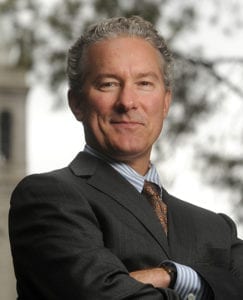
Haven’t stable coins been controversial?
Yes. For example, there was a question of whether the issuers of Tether were manipulating the price of Bitcoin. Part of the reason that scenario is possible is that Tether is used as the medium of exchange in over 50% of Bitcoin transactions. When people are buying and selling bitcoins, more often than not they are trading tether for bitcoins. One reason is that when you go from dollars to bitcoins, you are also going from inside to outside the banking system. That has high transaction costs. Tether is already outside the banking system, which makes it a much cheaper and more frictionless way to go in and out of Bitcoin.
Most people see the cryptocurrency world as pretty wild and woolly. Are stable coins as safe as claimed?
Tether is pegged to the dollar at one-to-one, and its price has generally traded within 1% of one-to-one. But about a year-and-a-half ago, there was some concern in the market that Tether was not backed one-to-one with assets; i.e., if there was a mass redemption of Tether, the collateral would not be sufficient to cover the full amount. This concern led the price to fall as low as 95 cents to the dollar. There was an audit, which was not 100% transparent, but it did restore confidence in the marketplace.
What kinds of questions should we be asking about stable coins?
Stable coins come in a number of different flavors. Some purport to be 100% backed by redeemable collateral that’s in escrow, collateral that can’t be captured and run away with. But part of the question, even with Tether, is whether it really is 100% collateralized. And is all that collateral really liquid? If you have to sell in fire-sale conditions, even a “100% collateralized” asset may not turn out genuinely to be 100% collateralized.
What are the long-term prospects for stable coins and cryptocurrencies generally?
There will be a lot of shakeout. The stable coins that have the greatest market confidence concerning the legitimacy and liquidity of their collateral will win out. Meanwhile, if you think about the literally thousands of initial coin offerings, all the tokens, all the cryptocurrencies—90% of them will be valueless in 10 years, in my judgment.
In a shakeout scenario, do stable coins have an advantage?
Most stable coins have collateral. So, if a stable coin fails, it won’t be a complete cataclysm. Whatever collateral is left after liquidation costs will go to the holders. But, when you talk about cryptocurrencies that don’t have any collateral—the Bitcoins and ICOs that don’t have any fundamental value backing them—when those go away, their value goes to zero. I’m not predicting that Bitcoin will necessarily go to zero, but certainly there are a lot of assets in the digital economy that will go to zero over the next 10 years. At the same time, you’re seeing assets in the digital economy that are getting 10 times the valuation they had two years ago. You’ve just got to be in the right place. And it’s anybody’s guess what the right place looks like.
How are cryptocurrencies in general and stable coins in particular evolving?
This idea of inside the banking system versus outside the banking system—that’s a pretty bright line right now. But when central banks move into the digital asset world, the line won’t be as clear. A well-functioning stable coin adds a lot of value, and all of the big central banks are doing a lot of research on cryptocurrencies. Many of them are saying they will launch a digital currency in the next five years. My prediction is in 10 years we will have three or four important stable-coin digital currencies, based in blockchain, and issued by central banks. They will live more in the traditional regulated banking system. That will fill in the continuum.
You and Ganesh Viswanath-Natraj just released a paper titled “What Keeps Stable Coins Stable?” What questions were you looking at?
We wanted to look at how tightly the price of Tether was pegged to the dollar. What we found was somewhat surprising. Tether trades at both a discount and a premium to the dollar. You might think a stable coin would trade like the Argentine peso in the early 2000s, when the peso was pegged to the dollar. But people didn’t have full confidence that the Argentine central bank would support the peso, so the peso consistently traded at a discount, sometimes substantially so.
What might explain Tether trading at a premium to the dollar?
There is this vehicle currency demand that can cause Tether to trade at a premium. If I as an investor can get into Bitcoin by either using dollars or Tether, but it is expensive to get into Bitcoin using dollars because transaction costs are higher, than I’d much rather buy bitcoin using Tether because it gives me a near costless option for getting into Bitcoin whenever I want. That “vehicle-currency demand” for Tether is what pushes its price above one US dollar.
 When Adj. Prof. Henry Chesbrough, PhD 97, was researching open innovation in the pharmaceutical industry, he found one pharma that had 7,000 scientists working on tens of thousands of compounds. But the company only licensed out less than one a year, shelving the others.
When Adj. Prof. Henry Chesbrough, PhD 97, was researching open innovation in the pharmaceutical industry, he found one pharma that had 7,000 scientists working on tens of thousands of compounds. But the company only licensed out less than one a year, shelving the others.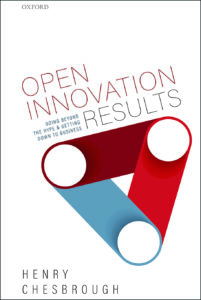 Chesbrough is back to close the loop with his most ambitious work to date.
Chesbrough is back to close the loop with his most ambitious work to date. 